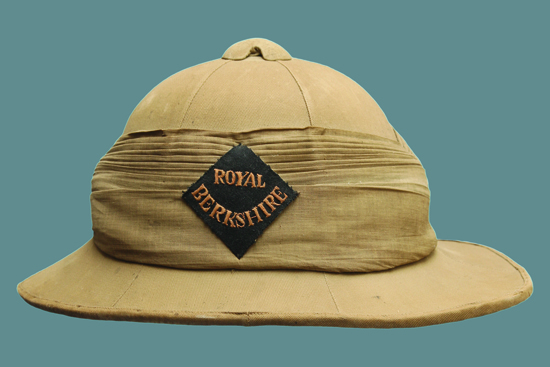
A Wolseley helmet provenanced to Private Frederick G. Rance of the 1st Battalion Royal Berkshire Regiment. This helmet was manufactured by Percy Ayses & Co. (Author’s collection)
This helmet was worn by Private Frederick G. Rance of the 1st Battalion, The Royal Berkshire Regiment, who saw action in Waziristan on the North West Frontier of India in 1921-23. He was awarded the India General Service medal 1908 with the clasp Waziristan 1921–24.
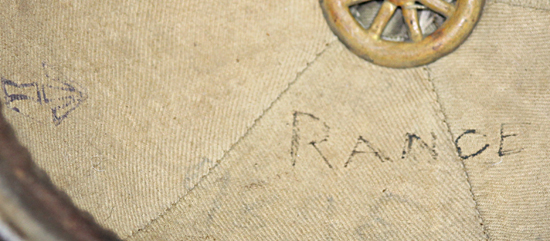
The interior of the helmet showing not only the soldier’s name but the Indian issue broad arrow stamp. (Author’s collection)
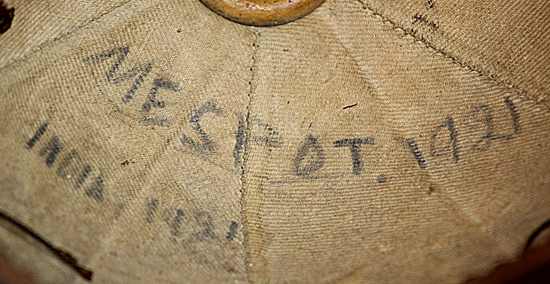
The interior also contains in handwritten ink “Mespot. 1921” and “India 1921” indicating the areas where Pte. Rance served. (Author’s collection)
The 1st Battalion of the Berkshires was deployed, in the timeframe, as follows –
- 1920 – Persia (Mesopotamia was a part of Persia)
- 1921 – India, Bareilly
- 1921 – North West Frontier
- 1923 – Razmak
- 1925 – Lucknow
and returned to England in 1933/34.
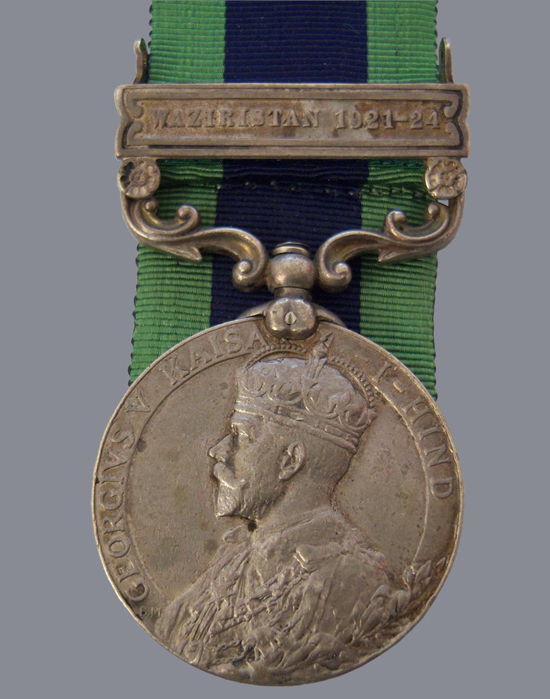
An example of the India General Service medal 1908 with the Waziristan clasp. This shows the obverse with the image of King George V in coronation robes. This example was struck at the Calcutta mint as is indicated by the less ornate claw than the one seen on the Royal Mint struck medals. (Photo courtesy of Brian Wolfe)
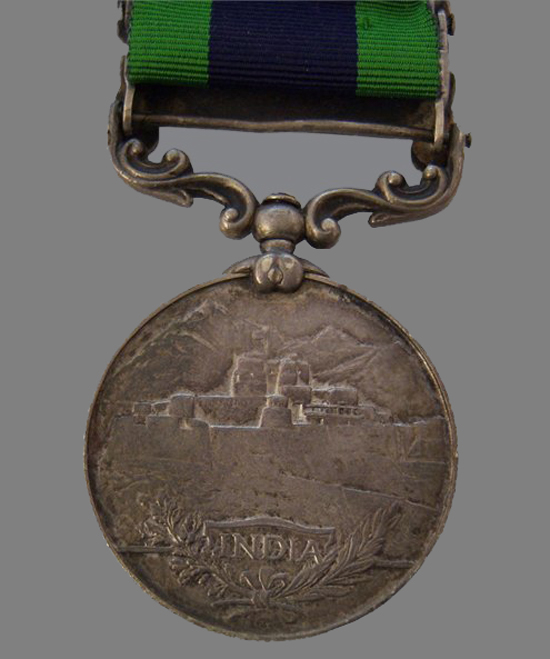
The reverse of the IGS medal showing the fort of Jamrud, mountains in the background and with a branch of oak and laurel with the word INDIA above. (Photo courtesy of Brian Wolfe)
The criteria for the award of this medal were as follows “All troops, authorised public and private followers and civilian personnel borne on the War Establishment (India) who served in North and South Waziristan, Bannu, Dera Ismail Khan Civil Districts and that portion of the Mianwali District which lies west of the River Indus, also the military posts of Mari Indus and Darya Khan, east of the River Indus, between 21st December, 1921 and 31st March, 1924, both dates inclusive.” 1
From a pamphlet of 1924 “The Mahsud or Waziri is an expert at attacking convoys or small detachments and is assisted by the nature of his country, the ravines being narrow and winding, while the hillsides in the northern tracts are often thickly covered with bushes. He attacks systematically, with special parties being told off for specific duties, such as the neutralisation of adjacent piquets by fire, supports to his advancing parties of swordsmen etc….Ambushes may sometimes open by a few shots from one side of a nullah. Untrained troops rush to cover on the side from which the fire comes. This is what is waited for. Heavy accurate fire from the other bank then finishes the party.
Against troops proceeding to take up position the usual plan is to ambush the leading party of the advanced guard, firing a volley and charging immediately. Knives are used to cut free rifles and equipment, and the tribesmen make off in the inevitable confusion before a counter attack can be organised.” 2
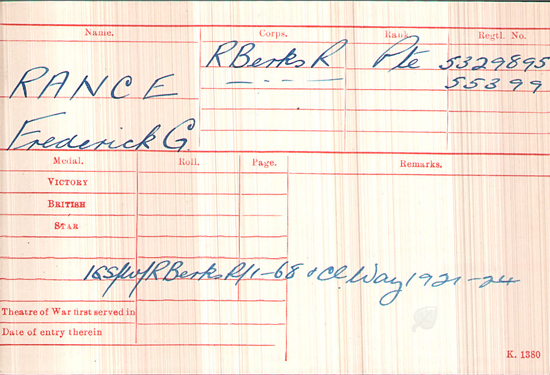
The medal card for Private Rance showing that he was in the Royal Berkshire Regiment and was awarded the IGS with Waziristan clasp. (Author’s collection)
“His regimental numbers are interesting on his medal card as the bottom number 55399 is his original Royal Berkshire number and the top number 5329895 is his Royal Berkshire number issued as part of the new regimental block numbering system introduced in 1920, the Royal Berkshires were issued block numbers 5328001 – 5373000. The number 55399 is not a 1914 number either and certainly looks to be a number issued much later in the Great War. So this lad may actually be either a transfer or young conscript into the Royal Berkshires opting to take up regular service post 1918.” 3
There were four men named Frederick Rance born in Berkshire in the period 1897 – 1904 inclusive, with the most likely candidate being the one born in 1901 and whose name is given in full as Frederick George Rance. The two born in 1897 would have either volunteered or been conscripted to serve in the First World War and the one born in 1904 would have been too young, in April 1918 the Military Service Act was extended so that men aged from seventeen to fifty-one could be called up but this man would have only been fourteen in 1918.
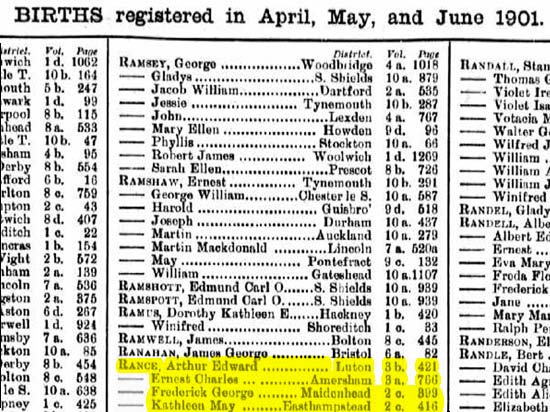
An extract from the 1911 UK Births, Deaths and Marriages database showing George Frederick Rance born at Maidenhead, Berkshire and whose birth was registered in the April quarter of 1901. (Author’s collection)
1 http://www.northeastmedals.co.uk/britishguide/india_general_service_1908_award.htm
2 http://www.militaryphotos.net/forums/showthread.php?160068-Waziristan-latest-from-The-News-%28Pakistani-paper%29
3 Graham Stewart, in correspondence with the author

very informative article
Pingback: A Berkshire Lad Revisited | Military Sun Helmets